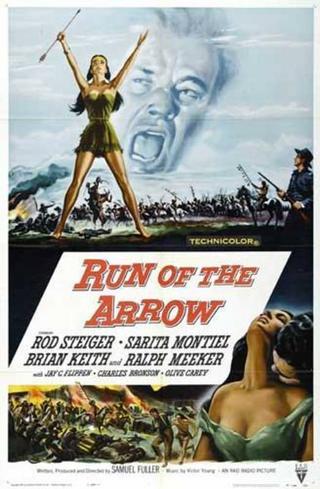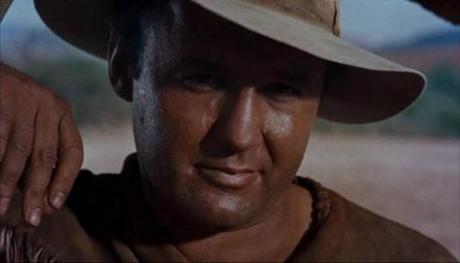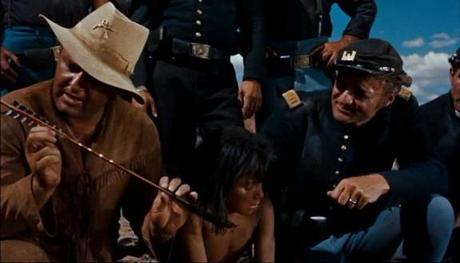
Whatever the causes of conflict might be, the aftermath, particularly for those on the side of the vanquished, tends to follow predictable pattern and is typically characterized by feelings of futility, division and bitterness. The taste of defeat is sour, and the man who partakes of it may well find himself raging against the only adversary worthy of his bruised and broken contempt: the inadequacy and impotence he perceives within himself. Sam Fuller's Run of the Arrow (1957) takes the capitulation of the South in the Civil War as its starting point, clinically probing the raw wound left by that rending of a fledgling nation before cauterizing it and thus allowing the healing process to begin.
It begins at the end, the end of the war, or one war anyway. With Lee about to acknowledge defeat, one embittered soldier of the South, O'Meara (Rod Steiger), fires the last bullet of the conflict. That fateful shot strikes and critically wounds a Yankee lieutenant. Yet in what is perhaps a telling action as far as the true character of O'Meara is concerned, he takes his stricken enemy back to his own lines for treatment by the field surgeon. Our protagonist is an angry and frustrated man, promised much but denied more by the battles he's lived through, he's seen his world smashed and his family decimated. For all of the hatred he claims to have embraced and the rage he's barely able to contain, he never loses touch with his humanity and the deceptively hard heart he notionally displays is in reality little more than a fragile shell. The short-term result is that this man is left feeling adrift in life, rootless and without a sense of loyalty - so he sets out in search of something to which he hopes he may attach himself. To that end he heads west, to the plains and the simplicity, and in some respects, the brutality of the Sioux. All the while though, as he seeks to transform himself and rediscover his place in the world, O'Meara is in fact on a cyclical journey, one that will ultimately lead him back to his own innate morality. And so the tale can end where it began, and the path towards internal reconciliation can be accessed.

Fuller's characteristically punchy script is nicely constructed and layered; the classic, cyclical form utilized frames it all neatly while the characters are set up to mirror one another, and the central theme of the quest for inner reconciliation which is portrayed on a personal level can also be seen as an allegory for a wider process in national terms. The figure of O'Meara is (to my mind anyway) suggestive of Fuller himself, in that we have an ethical and fundamentally sensitive man choosing to present himself as a maverick. It's hard not to see something of the provocative director in the confrontational character portrayed by Steiger. And Steiger, who too often in his career succumbed to the temptation to feast on the scenery, turns in a relatively restrained performance - there's only one early scene with Olive Carey where he really lets rip and seriously overcooks it.

While I take a lot of pleasure in sifting through the theme of the picture and the overall shape of it, it's worth bearing in mind that the movie also functions and can be approached purely as a highly professional piece of entertainment, thus combining the essential characteristics of any successful piece of filmmaking. Joseph Biroc's photography makes the most of the harsh Utah locations, and it's always good to see a western which predominantly features exteriors. Aside from Steiger, the cast is very sold too. Ralph Meeker and Brian Keith swagger and sympathize respectively as they offer contrasting images of the victorious Northerners, while Charles Bronson, Sarita (Sara) Montiel and Jay C Flippen fill the principal native roles with varying degrees of success.
This is a slightly shorter piece than I've been in the habit of writing here, and there are a couple of reasons for that. Firstly, I'm still easing my way back into site after lengthy lay off. And secondly, I'm toying with the idea of going down the road of writing briefer posts in the future, ones that focus on a few aspects of a work that particularly engage my attention. We'll see how it develops.
